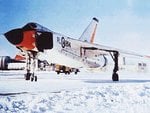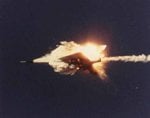Nonskimmer
Captain
Awww, thanks buddy! 
And I actually do agree with every word you say about the F-14, especially the D model. It's just that for it's intended role, to defend the United Kingdom from Soviet bombers, the Lightning excelled. It was a superb interceptor. It could accelerate and climb like a rocket.
BTW, shouldn't you be on vacation already? Why are you still here?
And I actually do agree with every word you say about the F-14, especially the D model. It's just that for it's intended role, to defend the United Kingdom from Soviet bombers, the Lightning excelled. It was a superb interceptor. It could accelerate and climb like a rocket.
BTW, shouldn't you be on vacation already? Why are you still here?

 At least this time you probably proof read what you posted so you don't begin to contradict yourself!
At least this time you probably proof read what you posted so you don't begin to contradict yourself!



